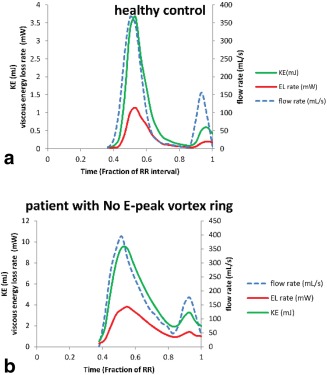Figure 2.

Temporal evolution of viscous energy loss rate ( ), kinetic energy (KE), and inflow rate over LV diastole of a typical healthy subject (a) and a patient who did not present E‐vortex ring formation but rather a complex irregular flow instead (b). Viscous energy loss characterized by E‐ and A‐peaks is significantly elevated (with more than two‐fold increase) in the patient (b) compared with the healthy control subject (a).
